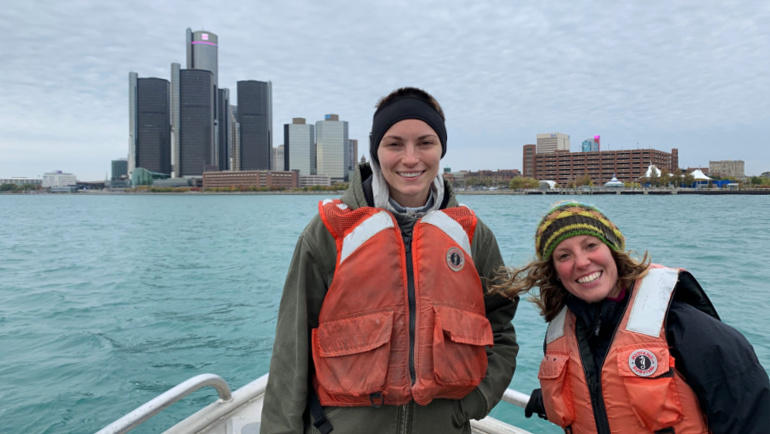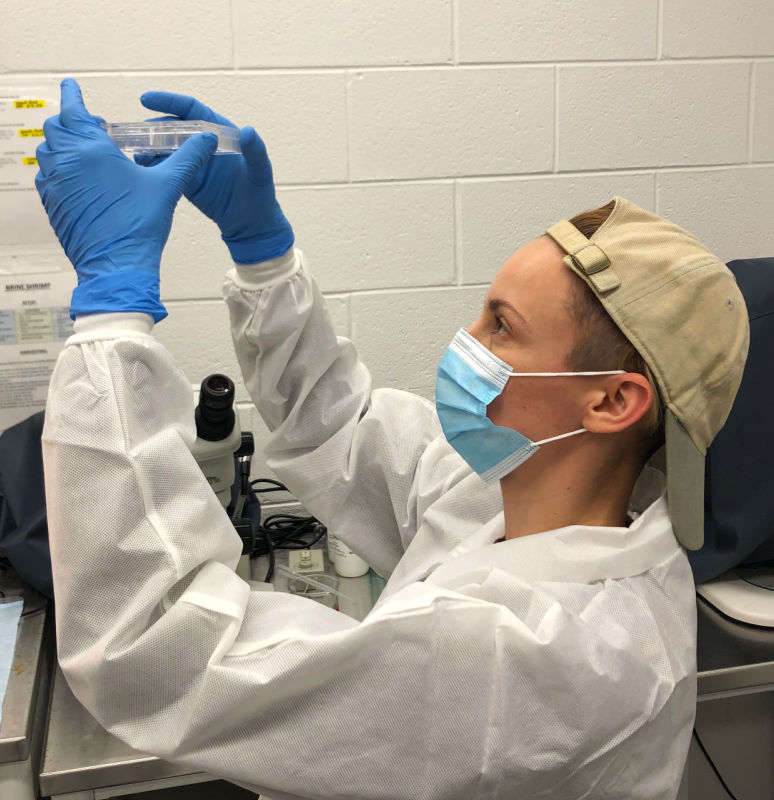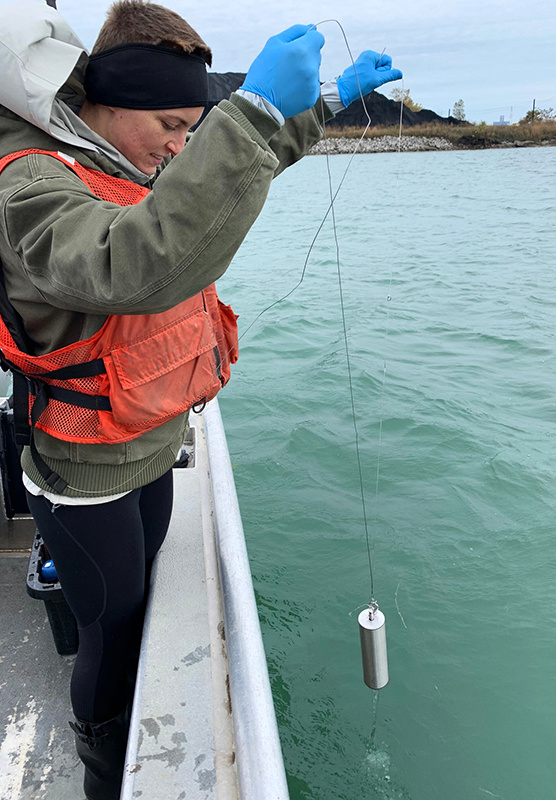
Common household products regularly used by consumers may be contributing toward the growing problem of toxins in waterways.
A class of chemicals known as per- and polyfluoroalkyl substances (PFAS) are largely used in industrial and commercial applications as a surface treatment for a number of household products, including non-stick cookware, fast food wrappers, microwave popcorn bags, shampoos, cosmetics, and other water- and stain-proofing products.
PFAS consist of more than 5,000 chemicals and are extremely resistant to degradation, leading to their persistence in the environment and organisms, including aquatic life and mammals. PFAS are commonly called “forever chemicals” due to their longevity.

Alex Haimbaugh, a Ph.D. candidate in Wayne State’s Department of Pharmacology, presented her findings during the 2021 Graduate Research Symposium, which was held virtually March 1 through 5. Her research project, “Early-life exposure to environmental toxicants,” was delivered during the Three Minute Thesis (3MT) segment, an international research communication competition that features thousands of participants every year. Eighteen finalists, including Haimbaugh, presented their theses and their significance in three minutes or less.
Haimbaugh is a member of the WATER (Warrior Aquatic and Translational Environmental Research) lab at Wayne State. Tracie Baker, assistant professor in the Institute of Environmental Health Sciences and Department of Pharmacology, is Haimbaugh’s Ph.D. mentor and serves as the principal investigator over this research.
During the study, which began in spring 2018, WATER lab researchers collected and tested surface water samples from six locations along the Lake Huron to Lake Erie corridor, finding a range of compounds and contaminants. Various levels of PFAS contamination was found, pointing to the need for more research on PFAS toxicity.
Haimbaugh exposed embryonic zebrafish to environmentally and socially relevant levels. Zebrafish are a useful model organism for developmental toxicology due to their transparent egg, high fecundity (the ability to produce an abundance of offspring or new growth; fertility) and similar genome to humans. Through further examination, researchers are learning more about PFAS and their potential link to cancer and endocrine-related issues, among other health concerns.

Despite phasing out production in the United States, two of the most environmentally common PFAS compounds, perfluorooctanoic acid (PFOA) and perfluorooctanesulfonic acid (PFOS), have been found in the parts-per-million range in blood samples from the general population. These compounds also persist in waterbodies.
Experts face many challenges as they determine methods to mitigate the PFAS’ impact to the environment. For example, the Lake Huron to Erie corridor is a source of drinking water for millions, and it contains important spawning habitats for numerous fish species while also serving as a heavily used area for recreation and sustenance fishing. Drinking water treatment plants are not currently designed to handle the removal of these compounds found in water potentially affecting human and aquatic health.
Haimbaugh pointed out that further extensive research is needed to move forward in addressing the environmental effects from toxins in the waterways and looking for solutions. “PFAS are widely found in the environment and in everyone’s body. There are multiple associated health issues from exposure to these chemicals. Continuing aggressive research is necessary to address such a widespread problem.”
